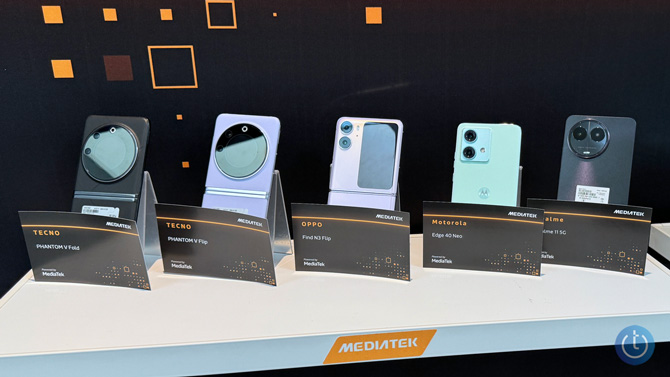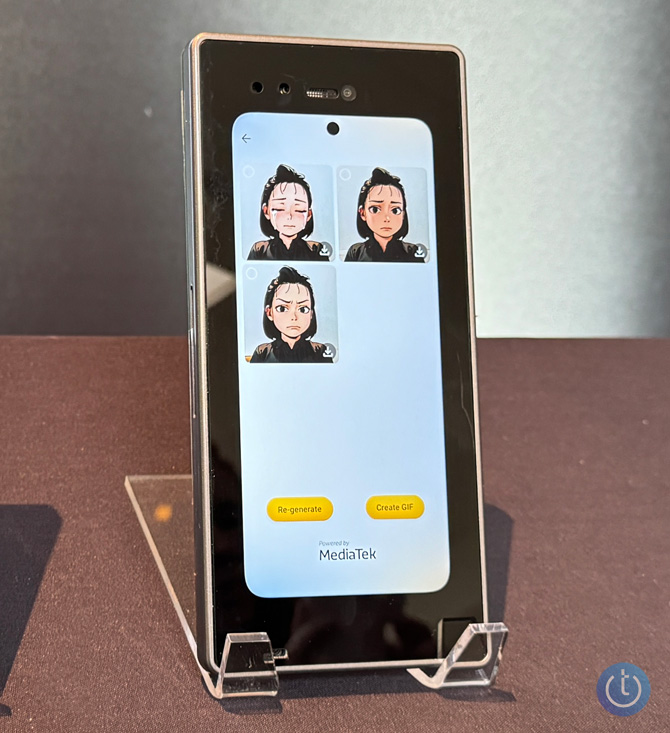The high end of smartphones has been dominated by devices powered by AI chips, including the Apple iPhone 15, Google Pixel 8, and Samsung Galaxy S24. With MediaTek's newest flagship mobile chipset, the Dimensity 9300, on-device AI could appear on more affordable phones for markets outside China as early as next week's Mobile World Congress (MWC).
While most people have no idea what type of silicon chip powers their smartphone, much less whether processes happen on the device or in the cloud, it may be something to consider as AI becomes a more significant part of our lives.
Most flagship, or high-end, Android phones in the US run on Qualcomm's premium Snapdragon processors. Apple and Google make their own chip for their phones.
MediaTek's chips currently power more than two billion devices a year. You'll find them in many mid-range and budget-friendly Android devices from brands like Motorola, OnePlus, and even Samsung, and also in Amazon's Echo smart speaker products, TVs, and smartwatches.

Phones that use MediaTek chips from the left: Tecno Phantom V Fold, Tecno Phantom V Flip, Oppo Find N3 Flip, Motorola Edge 40 Neo, Realme 11 5G.
Read more: TCL's MediaTek-powered 40 XE 5G phone is a surprisingly good and costs under $100
When I attended MediaTek's recent Executive Summit conference, the company detailed how moving the AI processing power to the 9300 chipsets will reduce the power consumption of generative AI processes by 45 percent, making them capable of processing AI requests up to 8 times faster than its previous generation chip. That's because there's no wait for the query to make its way to a server and back again.
There are two other key advantages of on-device processing power. AI can work without a strong cell signal or any signal at all. And since the chip handles tasks locally, there's better security and privacy.
While CPUs and processing cores are something we often hear about when reporting on chips, generative AI is very new, especially on-device generative AI. Moving the AI processing from the cloud to the device ushers in a "new era of generative AI applications and generates huge, exciting experiences for millions of users," MediaTek CEO Rick Tsai said at the Summit.
What those exact experiences might be will mostly be up to developers and phone manufacturers, Avi Greengart, President and Lead Analyst at Techsponential, told me.
Read more: Google Puts AI in the Spotlight with the Pixel 8 and 8 Pro
"There are technical foundations that MediaTek is putting in place – including working with different AI models and software developers. OEMs can then decide what and how to expose that to their customers. Some will just preload apps, others will integrate capabilities into their Android user interface itself," he explained.
MediaTek's Finbarr Moynihan, General Manager and Vice President of Corporate Marketing, described it to me as more of a platform.
"Ultimately, it's for app developers, OEMs, to kind of figure out what's the right way to take advantage of that technology, to deliver that experience to the consumer. I think we're going to see a lot of trial and error and experimentation over the next 12 months in this product cycle."
Moynihan sees social media and personalization as a place users may want to start. I witnessed that demo on a Vivo X100 smartphone (launched in China), one of the first to run the new MediaTek Dimensity 9300 chipset. After a photo was taken, the phone's AI made avatars of everyone in the photograph, and while the results weren't perfect, the tech was fun to play with. (If you're attending MWC, you can get the demo.). "It's personal," said Moynihan. "It allows them to kind of enhance the way they communicate already. It fits into a model that's already there."

Another application I saw is the ability to create a photo based on words the user types in, like what we can do in applications like ChatGPT. Since the processing is done on the chip, it took about six seconds for the image to appear, far faster than if it was sent to and processed in the cloud. And that lower latency is just one of the benefits, says Greengart.
"In the short term, being able to use generative AI on your phone means more privacy for search and informational questions, and fun things, like the ability to generate weird cat pictures for social media and customized avatars based on photographs. Longer term, the user interface on your phone could adjust to your needs and moods… or something else entirely."
Read more: Google rebrands Bard to Gemini and puts it on your phone
During my discussion with MediaTek's Corporate Executive VP and CTO, Vince Hu, he described other potential applications like summarizing emails or an article you need to read, providing top-line info at a glance before you decide what to dive further into. Photography is another category where AI helps make better photos. Hu said AI can recognize people you photograph often, like your kids, and help to fill in details when you zoom in too close, alleviating the grainy image you typically get.
MediaTek's Dimensity 9300 supports standard large language models (LLMs) like Meta's Llama2 and Baidu's ERNIE-3-4. CEO Tsai says the edge AI capabilities will be a huge part of how they differentiate themselves from others. He envisions an edge computing ecosystem that will accelerate AI application development not only in smartphones but also in vehicle tech, smart home devices, TVs, and other IoT edge devices. In fact, MediaTek announced partnerships with Nvidia to build software solutions for automotive OEMs and with Meta to develop chips for their new augmented reality (AR) glasses.
So, while we likely won't see US flagship Android phones from Samsung moving away from Qualcomm's Snapdragon 8 Gen 3 mobile chipset to MediaTek chipsets this year, we expect to see MediaTek bringing AI to more affordable smartphones as well as in-vehicle technology and smart devices with on-chip AI playing a larger role in how we experience our surroundings.
[Image credit: Andrea Smith/Techlicious]
Andrea Smith is an award-winning technology broadcast journalist, reporter, and producer. Andrea was the Technology Producer and an on-air Technology contributor at ABC News for over two decades before becoming the Lifestyle Channel Editor at Mashable, where she explored the ways in which real people, not just geeks, began using technology in their everyday lives.














